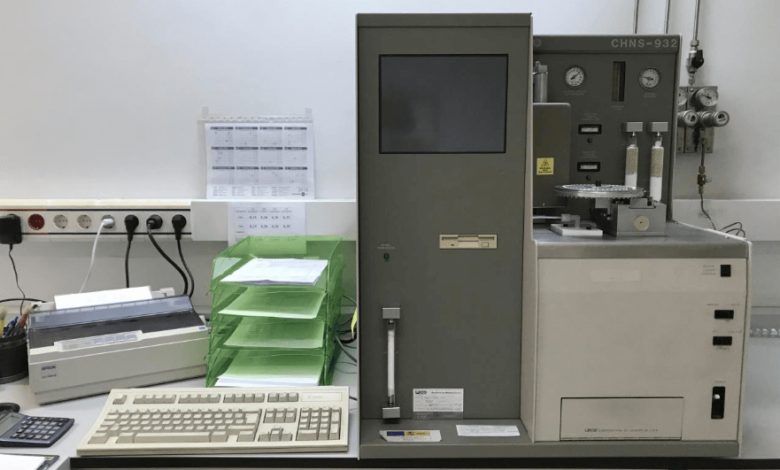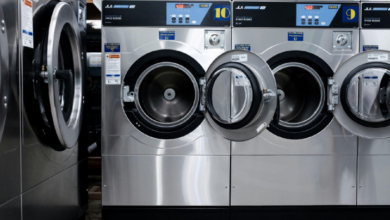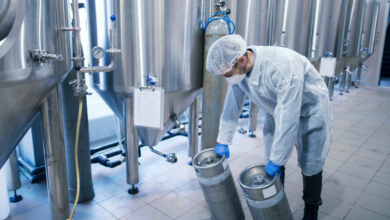Understanding AAS: A Fundamental Tool in Trace Element Analysis

Analytical science has transformed over the decades, but one technology that has remained consistent in its utility and effectiveness is aas—atomic absorption spectrometry. Whether in environmental monitoring, pharmaceutical development, or mining analysis, aas remains a cornerstone technique for accurate and efficient detection of metal elements.
This article takes a deep dive into what aas is, how it works, and why it’s still considered one of the most reliable and accessible elemental analysis methods today.
What is AAS?
aas, short for atomic absorption spectrometry, is a technique used to measure the concentration of metal elements in liquid samples. It works by detecting the amount of light absorbed by free, ground-state atoms in a flame or furnace. Since each element absorbs light at a specific wavelength, aas can determine the presence and amount of a particular metal in a given solution.
This method is highly specific, relatively inexpensive, and easy to operate, which is why it has remained relevant even as newer technologies like ICP-MS have gained popularity.
Basic Working Principle of AAS
The core principle behind aas is light absorption. Here’s how it works step-by-step:
- Sample Atomization: A liquid sample is introduced into a flame (usually air-acetylene) or a graphite furnace where it is vaporized and atomized.
- Radiation Source: A light source, typically a hollow cathode lamp (HCL), emits light specific to the element of interest.
- Absorption Measurement: As the light passes through the atomized sample, some of it is absorbed by the target atoms.
- Detector Response: The amount of light absorbed is measured by a photomultiplier tube, and the signal is processed to determine the element’s concentration.
- Output: Data is displayed graphically or numerically through a software interface, comparing the result with standard calibration curves.
See also: Why PCredCom Is Mexico’s Favorite Tech Playground
Key Features of AAS
🎯 Element-Specific Analysis
One of the major strengths of aas is its ability to target specific elements with high precision. Each hollow cathode lamp is element-specific, allowing selective measurement with minimal cross-interference.
🔬 High Sensitivity
While aas may not reach the ultra-trace detection limits of ICP-MS, it can reliably detect concentrations in the parts-per-million (ppm) and parts-per-billion (ppb) range—ideal for regulatory compliance and quality control.
💰 Cost-Effective
Compared to more sophisticated spectrometric instruments, aas is more affordable in terms of purchase, maintenance, and operational costs.
⚙️ Easy Maintenance
With fewer moving parts and a simpler setup, aas systems are easy to maintain and operate, making them well-suited for labs of all sizes.
Types of AAS Techniques
Depending on the atomization method used, aas can be divided into two main types:
1. Flame AAS (FAAS)
- Uses a flame as the atomization source.
- Ideal for analyzing moderate to high concentrations of metals.
- Common in water testing, food safety, and clinical applications.
2. Graphite Furnace AAS (GFAAS)
- Uses an electrically heated graphite tube for atomization.
- Provides higher sensitivity than flame methods.
- Suited for trace-level detection in complex matrices like blood, soil, or pharmaceuticals.
Some modern systems combine both techniques in one instrument, offering flexibility in method development.
Applications of AAS Across Industries
The versatility of aas enables its use in a wide range of industries:
🌍 Environmental Science
- Detects heavy metals like lead, mercury, and arsenic in water and soil samples.
- Helps organizations comply with environmental regulations set by bodies like the EPA.
💊 Pharmaceutical Industry
- Quantifies elemental impurities in drugs and raw materials.
- Ensures compliance with ICH Q3D guidelines for elemental safety.
🍎 Food and Beverage
- Identifies contamination or nutrient levels in consumables.
- Commonly used to test milk, juices, and processed foods.
🏭 Mining and Metallurgy
- Assesses ore composition and metal purity.
- Assists in refining processes and product validation.
🌾 Agriculture
- Measures micronutrients in fertilizers and soils.
- Supports crop management and yield improvement.
Comparison with Other Spectroscopic Techniques
Though aas is incredibly valuable, it’s essential to understand how it compares to other popular analytical instruments:
| Technique | Strengths | Limitations |
| AAS | Affordable, element-specific, accurate | One element at a time, less sensitive for ultra-trace |
| ICP-OES | Multi-element, fast | More expensive, more maintenance |
| ICP-MS | Ultra-trace analysis, multi-element | High cost, complex operation |
| XRF | Non-destructive, solid sample capable | Lower sensitivity for some light elements |
For labs that need to analyze just a few metals at relatively low cost, aas offers a highly reliable and practical solution.
Benefits of Using AAS in Routine Lab Work
The aas technique offers several day-to-day advantages in laboratory settings:
- Fast Setup and Analysis: Ideal for high-throughput environments.
- Robust Calibration: Simple calibration using standard solutions.
- Minimal Sample Preparation: Especially when using flame atomization.
- Low Operating Costs: Less argon consumption compared to plasma-based methods.
- Compact Design: Many benchtop aas instruments are space-saving.
How to Select the Right AAS System
If you’re considering investing in AAS instrument, here are key factors to evaluate:
- Elemental Needs: Identify which metals you frequently test to choose the right lamps and detection limits.
- Detection Range: Choose between flame and graphite furnace depending on your sensitivity requirements.
- Automation Options: Autosamplers and built-in software can streamline operations for larger labs.
- Budget: Balance upfront cost with ongoing expenses like lamp replacement and consumables.
- Support & Service: Choose a vendor known for excellent after-sales support and warranty coverage.
Real-World Use Case: AAS in Water Testing
A municipal water treatment facility recently upgraded from colorimetric methods to aas for its heavy metal analysis. Using flame aas, they routinely test for lead, cadmium, and mercury with greater accuracy and faster turnaround times. The transition not only helped them meet tighter regulatory standards but also improved public trust in water safety.
Future Outlook for AAS Technology
While aas is a mature technology, ongoing developments are improving its functionality and user experience:
- Digital Integration: Newer systems offer cloud storage, remote diagnostics, and AI-assisted calibration.
- Portability: Compact aas instruments are now available for field testing.
- Sustainability: Designs are becoming more energy-efficient and eco-friendly.
These trends ensure that aas will continue to play a valuable role in analytical laboratories well into the future.
Conclusion
Despite the rise of high-end technologies like ICP-MS and ICP-OES, aas holds a significant place in modern elemental analysis. Its simplicity, precision, and cost-effectiveness make it a go-to solution for labs needing dependable metal quantification without the complexity or expense of advanced instrumentation.
Whether you’re monitoring water quality, ensuring pharmaceutical compliance, or conducting agricultural research, aas provides the reliability and efficiency necessary for accurate trace metal analysis.





